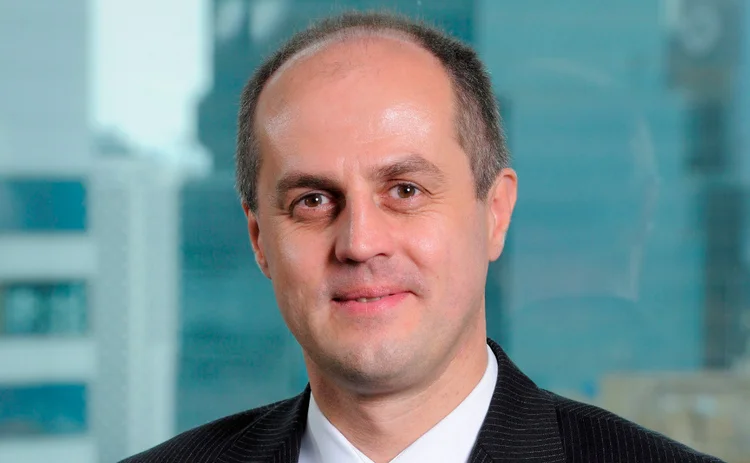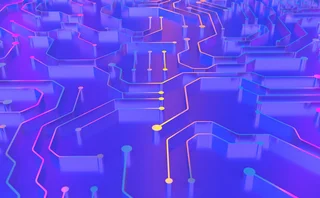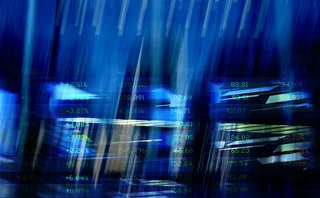
Commodity finance house of the year, Asia: Societe Generale
Energy Risk Asia awards, 2017: Green initiatives drive bank’s Asian energy funding business

Renewable energies have had a great deal of support and development in Europe and the US over the past decade, while in Asia the sector’s emergence has been slower. Over the past two years, however, Societe Generale has supported the financing of a number of renewable energy transactions across Asia and Australia, and found counterparts keen to get in on the act.
“We see two phenomena: liquidity that seems to be channelled into the asset class, and deal flow building up from a low base,” says Daniel Mallo, the bank’s head of natural resources and infrastructure, Asia-Pacific. “The other thing investors like about the renewable asset class is that, generally speaking, the cashflows tend to be contracted with high-quality offtakers so they can be a bit insulated from commodity prices. We see more merchant elements coming into that market place but, in general, it is viewed as a relatively long-term asset class with stable and predictable cashflows.”
Over the past 12 months, the bank has supported the financing of the Mount Emerald, Coopers Gap, Hornsdale and Silverton wind farms in Australia, a hydroelectric plant in Indonesia and helped with the financing of three major solar energy deals in Australia.
In Indonesia, Societe Generale has helped finance PT Medco E&P Malaka’s Block A Gas Development Project, which will develop approximately 350 billion cubic feet of gas. The project has been under development during strained times in the industry, but the bank’s persistence illustrates its long-term dedication in the sector, says Mallo.
“It shows that we were quite committed to the sector and we are willing to tough it out in more difficult times, and stand by our clients,” he says.
In renewables deals, it is not unusual to have 75–80% debt levels for a deal with high leverage and longer maturity, reflective of the predictable cashflows associated with the sector. That can help diversify a traditional energy investor’s risk profile, as conventional oil and gas financing agreements tend to be more sensitive to market fluctuations.
If you want to be in the metals and mining business you really have to be active in China. The country represents approximately 50% of global demand for a number of commodities
Daniel Mallo, Societe Generale
“Typically, we see leverage come down a little bit for the transaction with exposure to commodity prices, probably more in the 55% or 65% [range], but not much beyond that and a greater equity cushion in those transactions,” he says. “And also the tenor will be a little bit more medium term, probably five to seven years, because again you are getting a forward view on commodity.”
The storage of renewable energies – widely recognised as the sector’s greatest challenge – is an area the bank is keen to spearhead, says Mallo. While technology is developing rapidly, Societe Generale is keen to help drive investment.
“We are spending a lot of time on the battery storage technology, we are starting to see some commercial deployment of those battery storage projects in Australia or in the Americas,” says Mallo. “The fact that we are investing early on to me is the key, we need to stay at the forefront of our industry, which has actually become very dynamic.”
The bank has also been active in China’s metals sector: it has acted as mandated lead arranger in a deal to facilitate copper refiner Fangyuan Group’s working capital, and in the same role for a 34-month $165 million aluminium pre-delivery credit facility for Tianshan Aluminium Company.
China will be crucial to the bank’s future strategy, says Mallo. “If you want to be in the metals and mining business you really have to be active in China. The country represents approximately 50% of global demand for a number of commodities,” he says.
“We need to be active in China and we need to understand what is happening in metals in China, because it really has implications on our Australian, African and Latin American businesses. It’s another example of where we are resilient and are willing to take a view across the commodity cycle.”
Only users who have a paid subscription or are part of a corporate subscription are able to print or copy content.
To access these options, along with all other subscription benefits, please contact info@risk.net or view our subscription options here: http://subscriptions.risk.net/subscribe
You are currently unable to print this content. Please contact info@risk.net to find out more.
You are currently unable to copy this content. Please contact info@risk.net to find out more.
Copyright Infopro Digital Limited. All rights reserved.
As outlined in our terms and conditions, https://www.infopro-digital.com/terms-and-conditions/subscriptions/ (point 2.4), printing is limited to a single copy.
If you would like to purchase additional rights please email info@risk.net
Copyright Infopro Digital Limited. All rights reserved.
You may share this content using our article tools. As outlined in our terms and conditions, https://www.infopro-digital.com/terms-and-conditions/subscriptions/ (clause 2.4), an Authorised User may only make one copy of the materials for their own personal use. You must also comply with the restrictions in clause 2.5.
If you would like to purchase additional rights please email info@risk.net
More on Awards
Trading systems: structured products/cross-asset – Murex
Murex won the Trading systems: structured products/cross-asset award at the 2025 Risk Markets Technology Awards for its MX.3 platform, praised for its flexibility and advanced analytics
Best vendor for system support and implementation: Murex
Murex has won the Best vendor for system support and implementation at the Risk Markets Technology Awards, recognised for its innovative MX.3 platform, exceptional client support and seamless implementation services
FRTB-IMA product of the year: Murex
Murex wins FRTB-IMA product of the year for its advanced, scalable MX.3 platform enabling seamless regulatory compliance
Pricing and analytics: equities – Finastra
Finastra’s Sophis platform wins the Risk Markets Technology Award for Pricing and analytics in equities, recognised for its robust capabilities in equities and derivatives trading
Best execution product of the year: Tradefeedr
Tradefeedr won Best execution product of the year for its API platform, which standardises and streamlines FX trading data, enabling better performance analysis and collaboration across financial institutions
Collateral management and optimisation product of the year: LSEG Post Trade
LSEG Post Trade wins Collateral management and optimisation product of the year for interconnected services that help mitigate counterparty risk and optimise capital usage
Clearing house of the year: LCH
Risk Awards 2025: LCH outshines rivals in its commitment to innovation and co-operation with clearing members
Driving innovation in risk management and technology
ActiveViam secured three major wins at the Risk Markets Technology Awards 2025 through its commitment to innovation in risk management and technology







